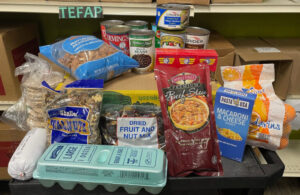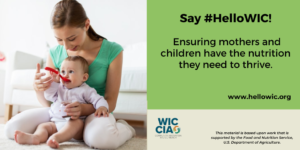With attention focused on whether some able-bodied adults may be restricted from receiving SNAP (today is the last day to submit comments on this Trump Administration proposal*), it’s a good time to consider the many positive provisions tucked away the recently passed farm bill.
While the protection of SNAP was an obvious huge win for the anti-hunger community, lesser-known aspects of the bill are equally tantalizing, and represent big leaps in advancing important causes like food as medicine, food rescue and indoor farming.
Fruit and vegetable consumption by SNAP participants, for example, should get a big boost through the strengthening of an incentive program that doubles SNAP dollars when spent on produce. Funding for this program is expanding from $100 million to $250 million, enough to make it a permanent fixture of future farm bills.
Some of this increased funding is earmarked for training centers aimed at kick-starting healthy-food incentive programs around the country. That’s good news for Wholesome Wave and Fair Food Network, both of which are gearing up to bring their versions of SNAP-based healthy food incentive programs to more farmer’s markets and grocery stores throughout the nation.
“I love that there’s money in there for training centers,” said Michel Nischan, CEO of Wholesome Wave. “The more centers that are out there, the better,” especially when they’re designed to take into account the distinct challenges facing individual communities, he said.
Fair Food Network is hoping to leverage the expanded farm-bill funding to support its recently launched Impact Hub, an interactive online resource intended to supplement its more high-touch training efforts. “We see building connectivity among healthy food incentive providers as our sweet spot,” said Holly Parker, senior director of programs.
Brand new to the farm bill is a small pot of money — up to $25 million — dedicated to nurturing produce prescription programs, another focal point of Wholesome Wave’s and a growing movement around the country. The prescriptions are actually vouchers people can use to buy produce — around $1,000 worth of produce over six months in one program run by Wholesome Wave.
Nischan expects multiple models of produce prescription to be explored through the funding. He noted, “If we all push the envelope, we’ll see more public dollars go to support these programs,” which have been highly successful so far in getting people to eat more produce as well as reduce their body-mass index.
Food banks like Second Harvest Heartland in Minn., which operates a lettuce-filled hydroponic farm inside a shipping container, will likely be pleased to see grant money and support going toward indoor farming and other emerging agricultural practices, in a first for the farm bill.
The Emergency Food Assistance Program or TEFAP also gets special attention, with an extra $4 million a year over five years going to support projects that give rescued food to non-profits. Elsewhere in the farm bill, $20 million is being made available for pilot projects that would test incentives to get SNAP households to purchase more milk.
To reduce food waste, the farm bill is providing money, administrative support and rules clarification. Specifically, grant money is being made available to support city-wide efforts to reduce food waste, with priority going to food recovery efforts. A new position in the USDA is being created to coordinate food waste reduction efforts across government departments and also produce a study on the amount of food wasted annually. Finally, new guidance will be developed to clarify and expand protections for people and entities that donate food.
It all amounts to significant progress on federal programs of interest to food banks. These advances are worth remembering as other aspects of SNAP, like funding for 755,000 able-bodied adults without dependents nor jobs, remain under threat.
* A three-day extension has been added to the comment period, from April 8 through 10, to account for technical difficulties with leaving comments before the April 2 deadline.








